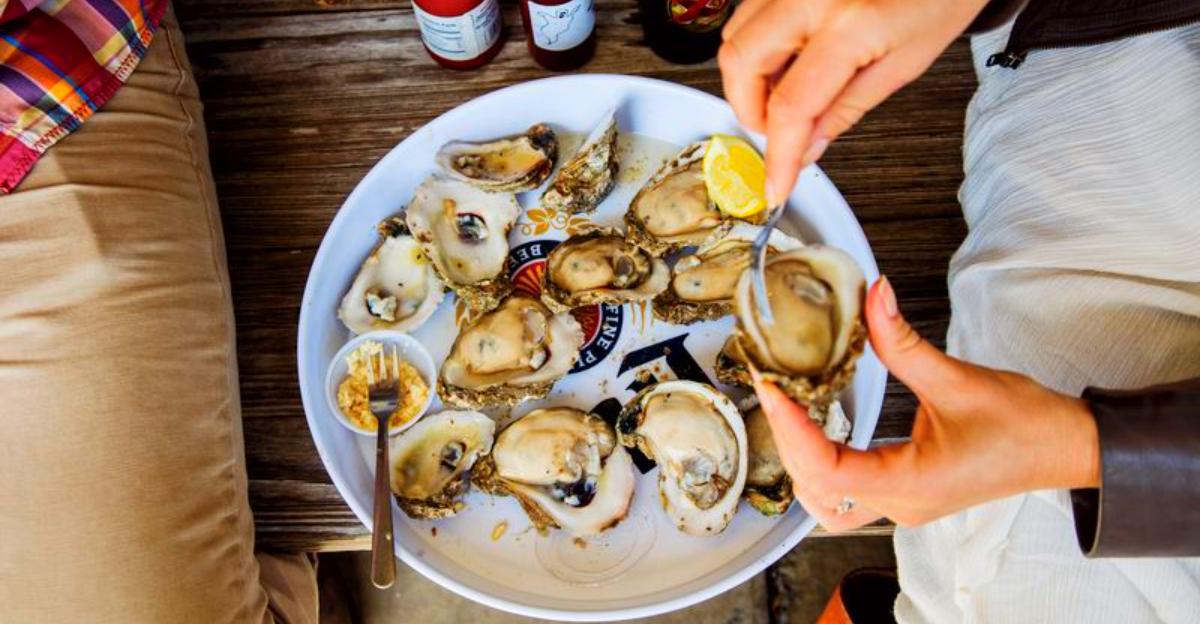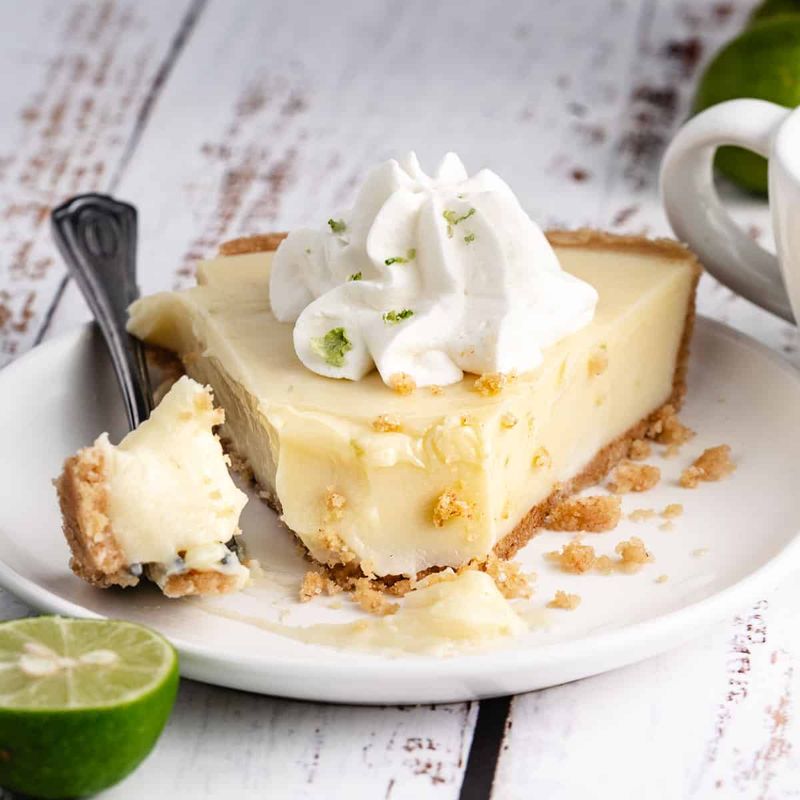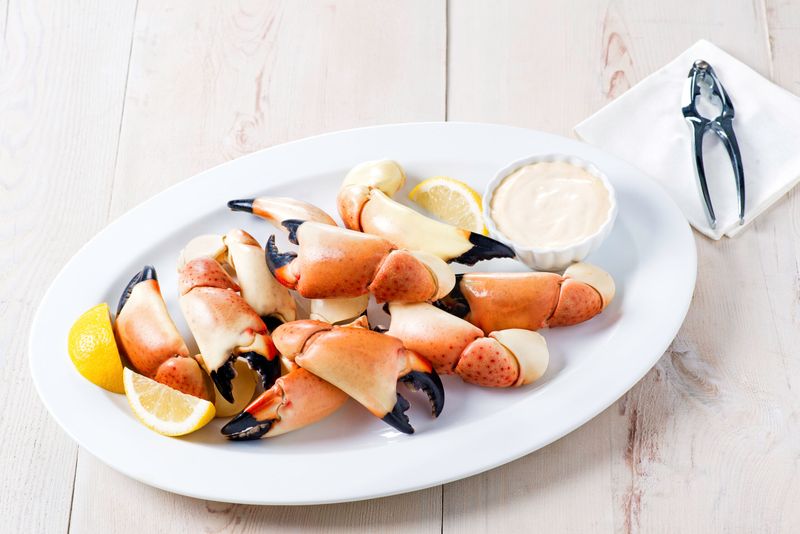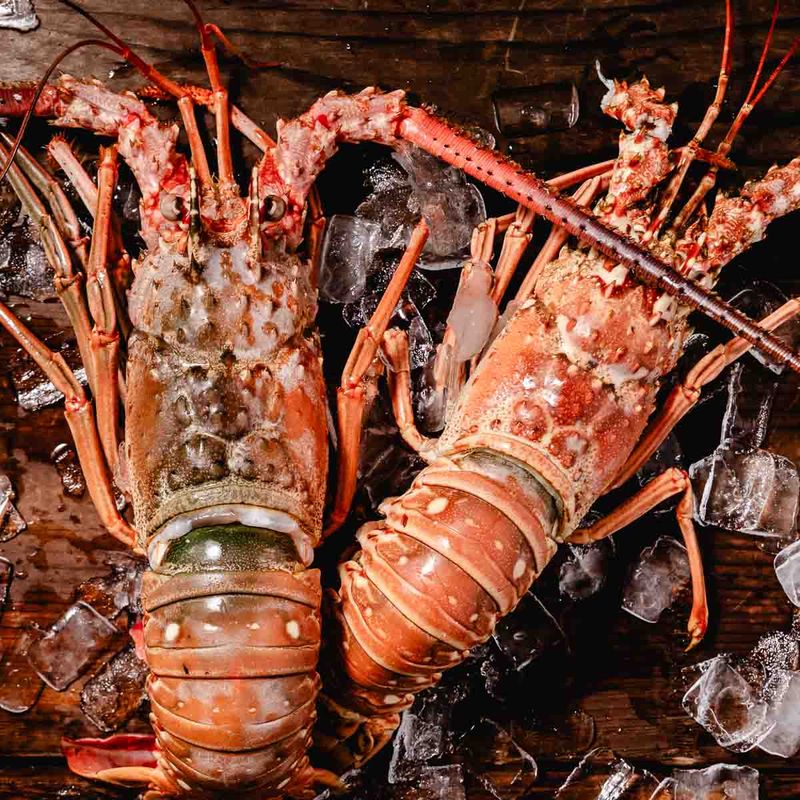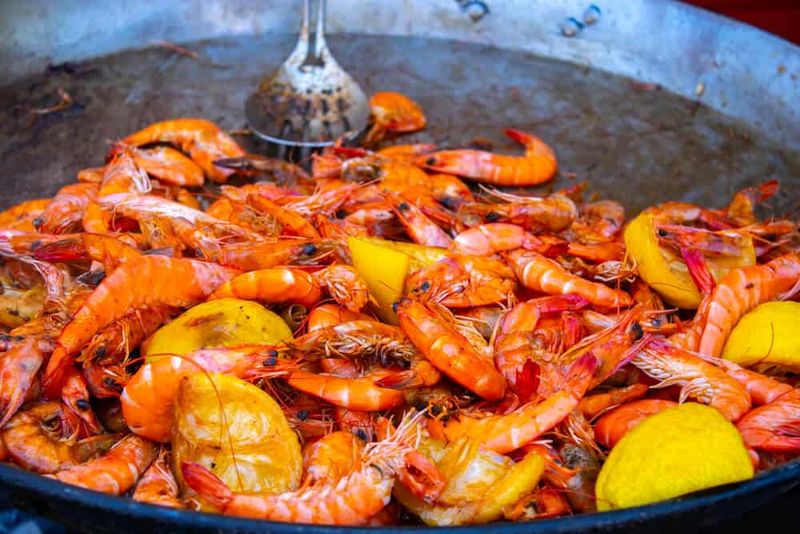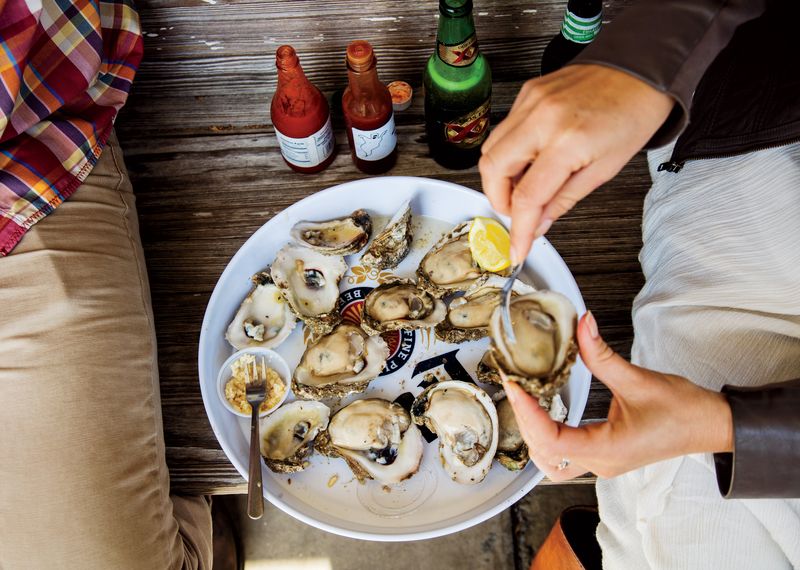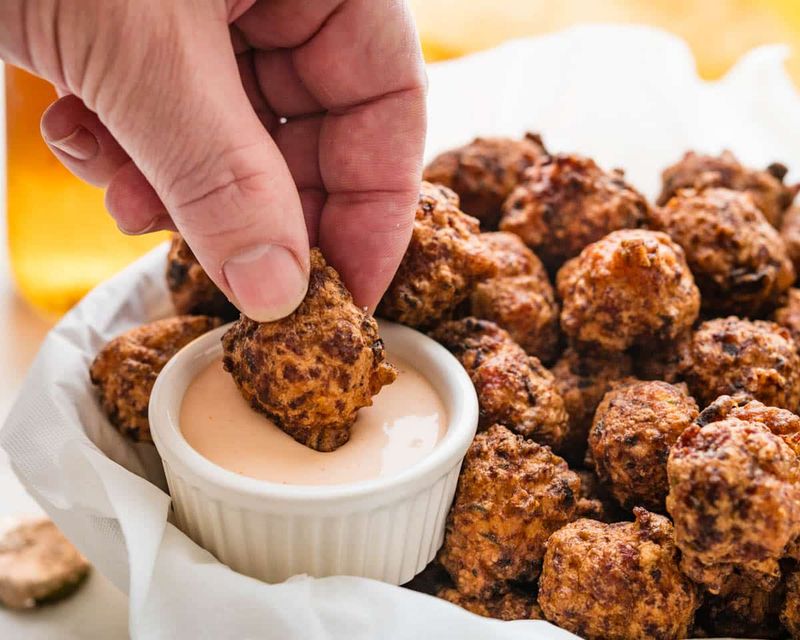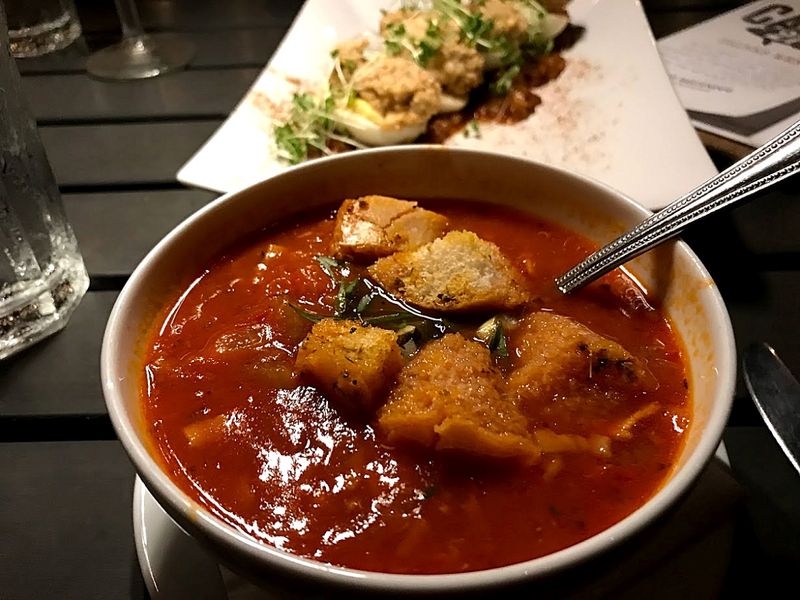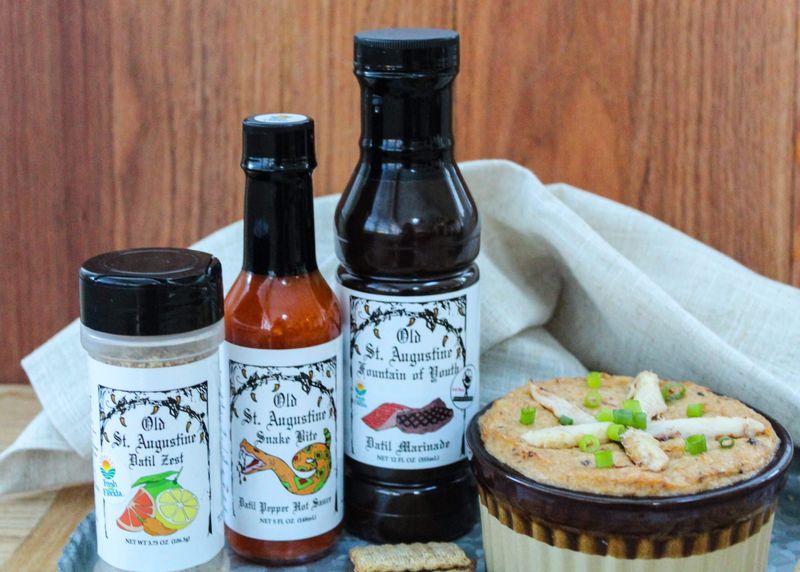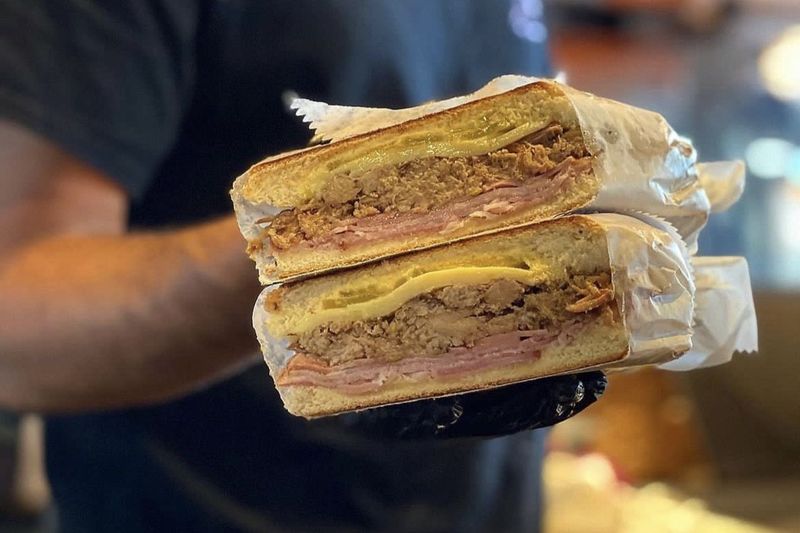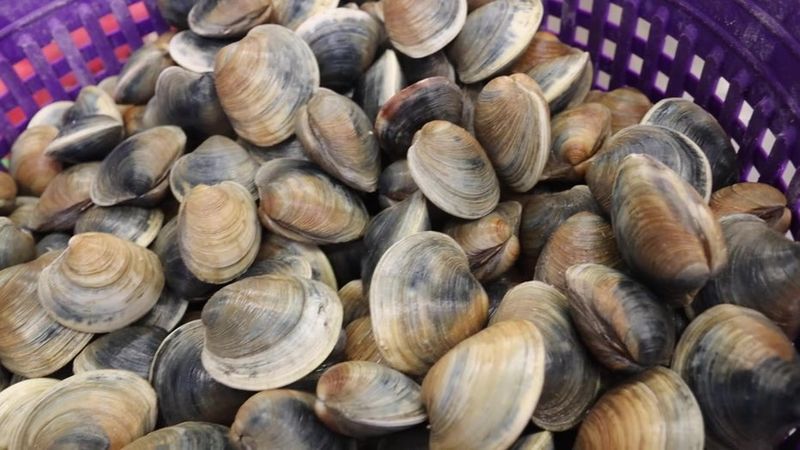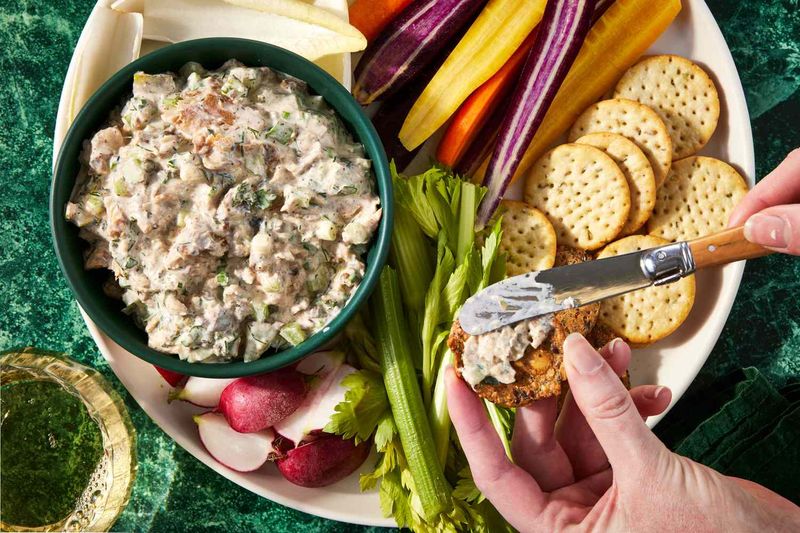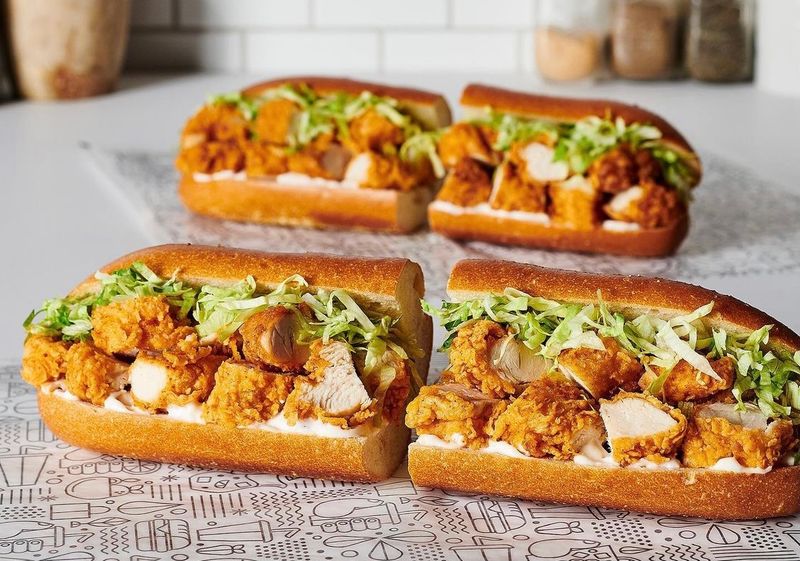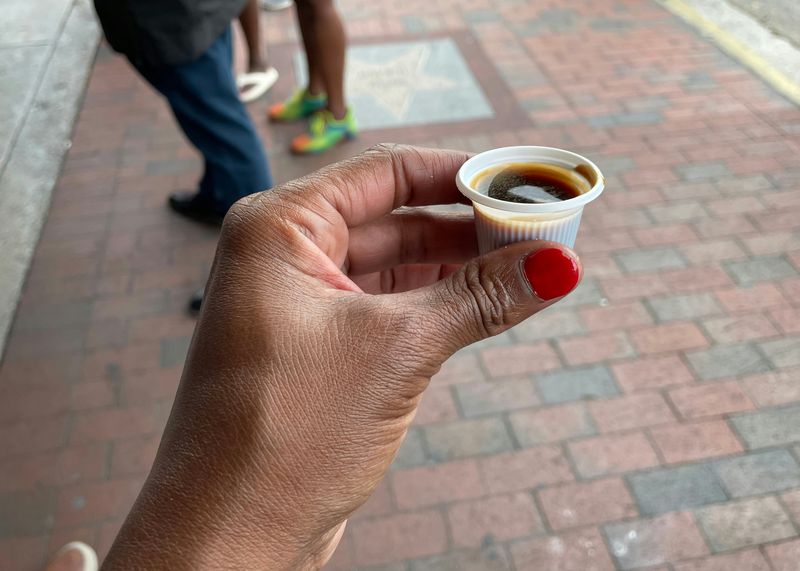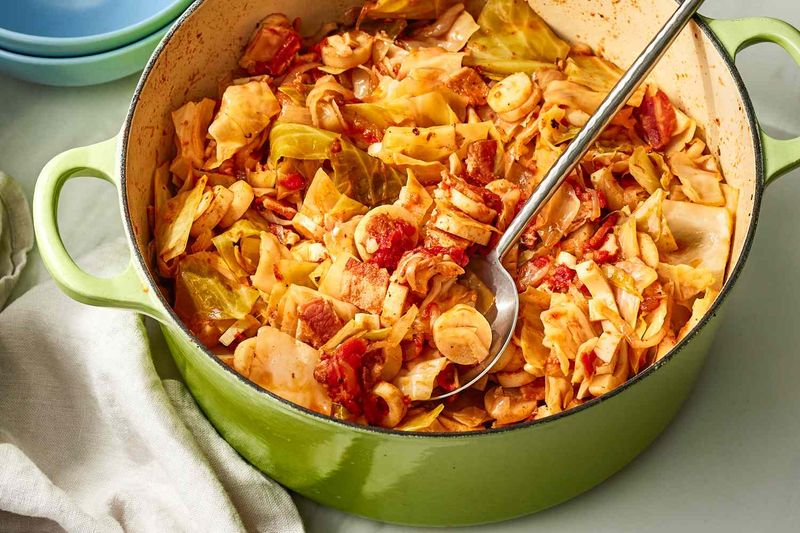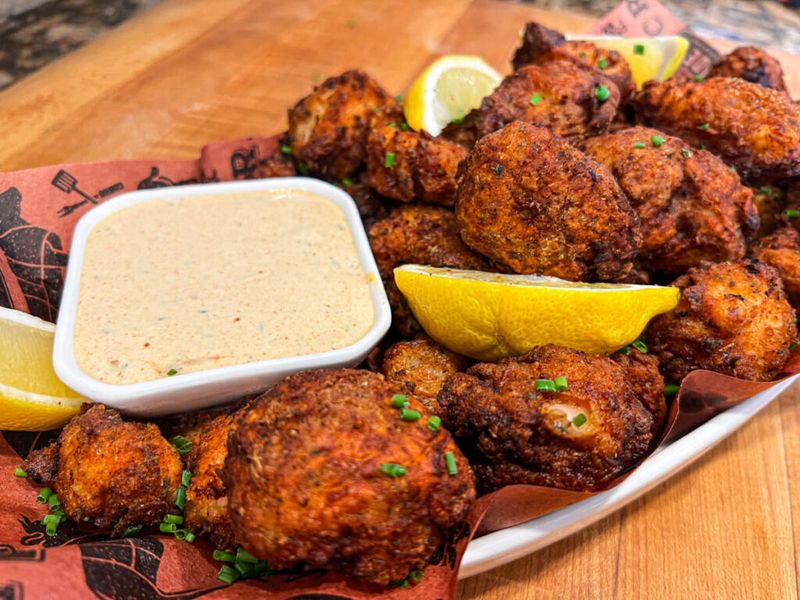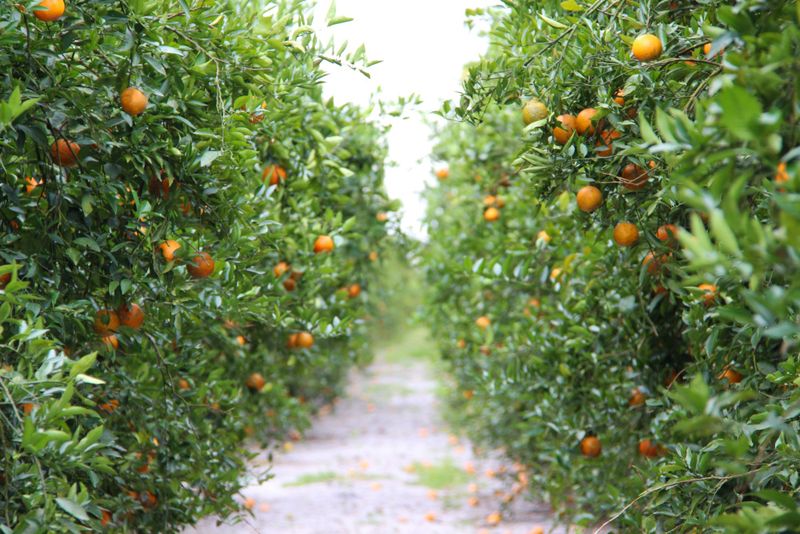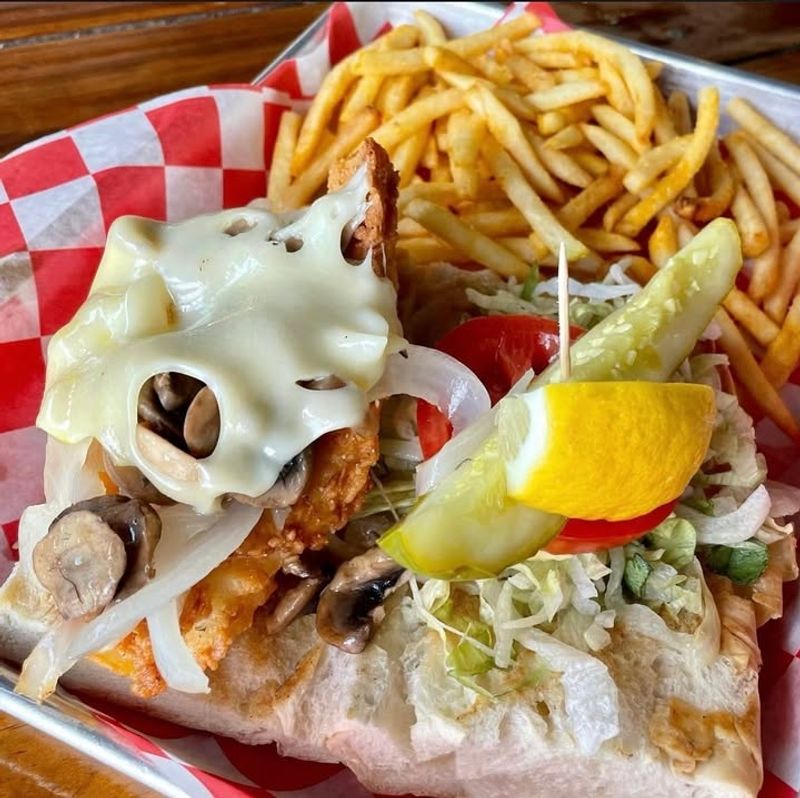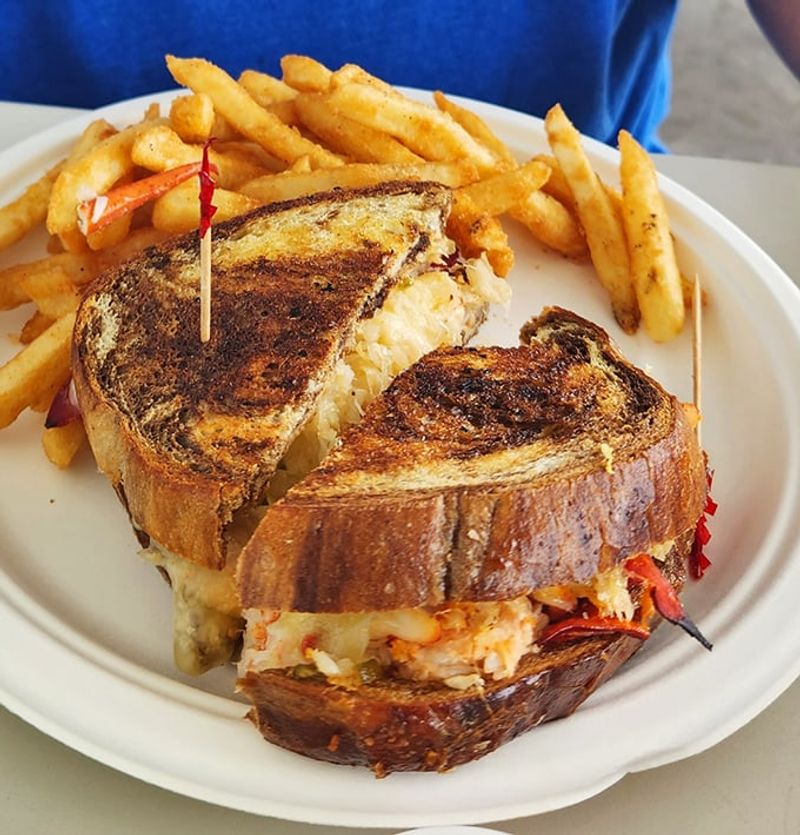Florida’s cuisine is a vibrant tapestry woven from diverse cultural influences and incredible local ingredients. From the Keys to the Panhandle, the Sunshine State offers unique flavors you simply can’t find anywhere else. Whether you’re a tourist planning your first visit or a longtime resident, these iconic Florida foods deserve a special place on your must-try list.
1. Key Lime Pie
The tangy zing of authentic Key lime pie is unmistakable – a perfect balance of sweet and sour that captures Florida’s sunny essence. This creamy yellow custard (never green!) nestles in a buttery graham cracker crust, crowned with fluffy whipped cream. Since 2006, it’s proudly held the title of Florida’s official state pie. The dessert’s roots trace back to Key West, where locals claim it was born before refrigeration using condensed milk and the area’s tiny limes. Traditionalists insist on a no-bake version, while others prefer it lightly baked. Either way, that first cool, citrusy bite is pure Sunshine State bliss.
2. Strawberry Shortcake
Sweet ruby-red berries cascade over pillowy cake and clouds of whipped cream in Florida’s newest official state dessert. Plant City – the winter strawberry capital of the world – grows over 11,000 acres of berries, supplying much of America during colder months. The Florida Strawberry Festival has celebrated this juicy treasure for nearly 90 years. Locals debate the perfect base: some swear by biscuit-style shortcakes, others prefer sponge cake. In 2022, the state legislature made it official, recognizing the economic and cultural importance of these berries. The ideal version features berries so fresh they’re still warm from the sun.
3. Florida Stone Crab Claws
Crack into these prized claws and discover sweet, firm meat that rivals lobster. Unique among seafood delicacies, stone crabs are harvested sustainably – fishermen take just one claw before returning the crab to the water where it regenerates the missing appendage. The strict season runs October 15 to May 1, making these treasures even more coveted. Joe’s Stone Crab in Miami Beach has served them since 1913, becoming an institution with their signature mustard sauce. Everglades City claims the title of stone crab capital, with fishing families harvesting them for generations. Their delicate flavor needs minimal preparation – simply chilled and cracked.
4. Florida Spiny Lobster
Missing the prominent claws of their Maine cousins, these tropical crustaceans make up for it with sweet, tender tail meat. The Keys waters teem with these spiny creatures, identifiable by their long antennae and spotted shells. Locals celebrate the season opening with mini-season – a chaotic 48-hour diving bonanza each July before commercial harvesting begins. The regular season runs August through March, with restaurants across the Keys featuring them in everything from simple grilled tails to elaborate pasta dishes. Traditionally served with drawn butter, their meat has a distinctive sweetness. Many Florida families have annual spiny lobster hunting traditions, donning snorkel gear to catch their limit.
5. Key West Pink Shrimp
These rosy-hued treasures earn their nickname honestly – a blush of coral pink distinguishes them from ordinary white shrimp. Harvested from the clean waters surrounding the Keys, they’re prized by chefs for their naturally sweet flavor and firm texture. The scientific name Farfantepenaeus duorarum might be a mouthful, but eating them is pure simplicity. Locals prefer minimal preparation – quickly steamed with Old Bay or sautéed with garlic and butter lets their delicate sweetness shine. Sustainability-minded fishermen harvest them using methods that minimize bycatch. Look for them at dockside markets and seafood shacks across the Keys and southern Florida, where they often go from boat to plate in a single day.
6. Apalachicola Oysters
Briny yet sweet, these legendary bivalves once accounted for 90% of Florida’s oyster harvest. The unique mixture of freshwater from the Apalachicola River and saltwater from the Gulf creates perfect growing conditions in Apalachicola Bay. Environmental challenges and overharvesting led to a moratorium in recent years, with careful restoration efforts underway. The oysters’ distinctive merroir – that special taste of place – comes from the bay’s precise balance of nutrients and salinity. Traditionally served raw with just a squeeze of lemon or splash of hot sauce, they capture the essence of Old Florida. The community hopes for a limited reopening by 2026, allowing this cultural and culinary tradition to continue for future generations.
7. Conch Fritters
Golden-brown on the outside, steamy and tender within – these savory spheres of goodness capture the essence of Keys cuisine. Bahamian influences shine through in this popular appetizer, where chopped conch meat mingles with peppers, onions and spices in a seasoned batter. Conch itself has a mild flavor and distinctive chew, similar to calamari but with its own unique character. Most restaurants serve these crispy delights with a side of key lime-mustard sauce or spicy remoulade for dipping. Though overharvesting led to conch fishing bans in Florida waters, the tradition continues with imported conch. In Key West, you’ll find them on nearly every menu, from upscale restaurants to humble roadside stands.
8. Minorcan Clam Chowder
Ruby-red and fiery hot, this distinctive chowder bears little resemblance to its New England cousin. St. Augustine’s Minorcan community – descendants of Mediterranean indentured servants who arrived in the 1700s – created this tomato-based specialty featuring their beloved datil peppers. The signature heat comes from these small, potent peppers that grow abundantly in the area. Unlike Manhattan chowder, the Minorcan version has a complex depth from herbs and spices passed down through generations. Local restaurants throughout America’s oldest city serve their own variations, but authentic versions always include datil peppers and plenty of fresh clams. One spoonful connects you to centuries of Florida’s oldest European-influenced culinary tradition.
9. Datil Pepper Everything
Fiery yet fruity, these distinctive little peppers pack serious heat with unexpected complexity. About the size of a jalapeño but closer to habanero in intensity, datils are St. Augustine’s culinary signature, believed to have arrived with Minorcan settlers centuries ago. The pepper’s versatility shows in products throughout Florida’s First Coast. Local artisans transform them into hot sauces, jellies, mustards, and even datil-infused honey that pairs beautifully with cheese. Restaurants incorporate them into everything from cocktails to desserts. The annual Datil Pepper Festival celebrates this beloved capsicum with cooking competitions and tastings. For heat-seekers, finding datil-flavored treasures becomes a delicious scavenger hunt across St. Augustine.
10. The Cuban Sandwich
Between crispy pressed Cuban bread lies a perfect harmony of flavors that tells Florida’s immigration story. Layers of roast pork, ham, Swiss cheese, pickles, and mustard create a symphony of savory goodness that’s greater than its parts. The Tampa-Miami rivalry over this sandwich is legendary. Tampa’s version, officially recognized by city resolution, includes a layer of Genoa salami – a nod to Italian immigrants who worked alongside Cubans in Ybor City’s cigar factories. Miami purists scoff at this addition, maintaining their simpler version is authentic. Both cities press the sandwich until the bread develops a crackling crust while the interior remains tender. The debate continues, but everyone agrees on its deliciousness.
11. Cedar Key Farm-Raised Clams
Sweet, tender Cedar Key clams represent Florida aquaculture’s remarkable success story. This tiny Gulf Coast island community reinvented itself when fishing regulations threatened its livelihood, transforming from net fishing to clam farming with help from University of Florida researchers. Today, these sustainably raised hard clams account for 90% of Florida’s clam production. The clean Gulf waters around Cedar Key create perfect growing conditions, yielding clams with a distinctive sweetness and brininess that chefs covet. Local restaurants serve them steamed, in chowders, or raw on the half-shell. Recent hurricanes have challenged farmers, but their resilience mirrors the hardy nature of the clams themselves – making each bite a testament to Florida’s adaptability.
12. Smoked Fish Dip
Creamy, smoky, and utterly addictive, this Old Florida staple transforms humble local fish into something magical. Traditionally made with mullet along the Gulf Coast, the fish is slow-smoked over hardwood before being flaked and mixed with mayonnaise, cream cheese, and spices. Each coastal community has its signature version. St. Petersburg’s Ted Peters Famous Smoked Fish has been serving their legendary dip since 1951, often with a side of their German-style potato salad. The ritual remains the same – a generous scoop served with saltine crackers and usually some hot sauce on the side. From upscale restaurants to weathered fish camps along the Forgotten Coast, this unpretentious appetizer connects modern diners to Florida’s fishing heritage.
13. Publix “Pub Sub” (Chicken Tender Sub)
Florida’s beloved grocery chain created an unexpected cult phenomenon with their made-to-order sub sandwiches. The chicken tender version reigns supreme – featuring the store’s famous fried chicken tenders on freshly baked bread with toppings of your choice. College students spread the gospel of the Pub Sub across the Southeast. The ritual of ordering at the deli counter – watching as your sandwich is assembled and wrapped in distinctive green and white paper – has become a shared Florida experience. Road-trippers make special stops just to grab one for the journey. When hurricanes approach, Floridians joke about the “Pub Sub Index” – if these sandwich counters close, it’s time to evacuate because things are serious!
14. Cuban Coffee Culture
Tiny cups deliver massive jolts of sweet, potent coffee throughout South Florida. The ritual unfolds at ventanitas (little windows) where patrons order cafecito – intensely strong espresso sweetened during brewing, creating a distinctive caramel-colored foam called espumita. Sharing is central to this culture. Order a colada and receive a large Styrofoam cup of concentrated coffee with thimble-sized plastic cups for distribution among friends or coworkers. For something milder, try cortadito (“little cut”) with a splash of milk. Miami’s cafecito breaks punctuate the day at 3:05 PM – the city’s area code turned coffee time. This Cuban tradition has become quintessentially Floridian, fueling conversations and connections across cultural lines.
15. Swamp Cabbage
From Florida’s state tree comes a dish that connects modern diners to pioneer and Native American foodways. Harvesting requires removing the heart of the sabal palm – a labor-intensive process that yields a vegetable similar to artichoke hearts but with its own distinctive character. Traditional preparation is simple: slow-simmered with salt pork or bacon until tender. The result has a mild, slightly sweet flavor that absorbs the essence of whatever it’s cooked with. Annual Swamp Cabbage Festivals celebrate this heritage food, particularly in inland communities like LaBelle. Modern chefs have rediscovered this ingredient, incorporating it into upscale dishes. Each bite offers a literal taste of Old Florida that predates tourism and development.
16. Alligator Bites
“Tastes like chicken” barely begins to describe this uniquely Floridian appetizer. The white tail meat has a mild flavor with slightly firmer texture than poultry, taking on whatever seasonings it’s prepared with. Typically served as nugget-sized pieces, either blackened with Cajun spices or breaded and fried to golden perfection. Most restaurants serve them with a zippy remoulade or spicy aioli for dipping. Florida’s alligator meat comes from regulated farms and ranches, not wild harvests. The novelty factor makes it a tourist favorite, but locals appreciate it too – particularly at festivals celebrating Florida’s swampy heritage. First-timers are often surprised by how tender and approachable this prehistoric-looking protein can be.
17. Fresh-Squeezed Florida Orange Juice
Nothing captures liquid sunshine better than juice pressed from Florida oranges at their peak ripeness. The state’s unique growing conditions – sandy soil, abundant sunshine, and subtropical climate – create citrus with the perfect balance of sweetness and acidity. Roadside stands offering fresh-squeezed juice remain a cherished tradition despite the citrus industry’s challenges from greening disease. The experience of watching oranges transformed into vibrant juice before your eyes connects visitors to Florida’s agricultural heritage. True connoisseurs know that Valencia oranges make the best juice, especially those harvested February through May. The flavor profile – intensely orange with complex sweetness – simply can’t be matched by mass-produced alternatives.
18. Hogfish
Flaky white fillets with a sweet, delicate flavor make this Keys specialty worth seeking out. Unlike its name suggests, this fish is actually a member of the wrasse family, distinguished by its pig-like snout used to root through sand for crustaceans. This diet contributes to its exceptional taste – often described as a cross between scallops and grouper. Keys restaurants typically prepare hogfish simply: lightly fried, blackened, or in the local favorite “Hogfish Sandwich” with Swiss cheese and mushrooms on Cuban bread. Since they’re primarily caught by spearfishing rather than commercial methods, availability remains limited and seasonal. Stock Island and Marathon restaurants proudly feature this local treasure, best enjoyed with a water view and cold beer.
19. Lobster Reuben
Culinary fusion reaches delicious heights in this Keys creation that marries local seafood with New York deli tradition. Chunks of sweet Florida spiny lobster tail replace corned beef on grilled rye bread, while the classic Reuben elements – Swiss cheese, sauerkraut, and Russian dressing – remain. Key Fisheries in Marathon claims to have invented this beloved sandwich in the 1990s, and it’s since spread to menus across the Keys. The contrast between the tender lobster meat and tangy sauerkraut creates an unexpected harmony. Purists might scoff at the combination, but one bite usually converts skeptics. The sandwich represents the Keys’ approach to cuisine – respectful of traditions but willing to break rules for delicious results.
20. Pastelitos de Guayaba
Golden, flaky pastry cradles sweet-tart guava filling in these beloved Cuban treats that brighten Miami mornings. The contrast of buttery layers with tropical fruit creates an irresistible combination, especially when paired with strong Cuban coffee. Miami bakeries display trays of these diamond-shaped pastries alongside cheese-filled and meat versions. The most popular variation combines guava with cream cheese (pastelitos de guayaba y queso) for a perfect sweet-tangy balance. Though simple in concept, making them requires skill – the delicate pastry must be folded precisely to create those signature airy layers. These affordable treats connect generations of Cuban-Americans to their heritage while introducing newcomers to Miami’s vibrant food culture.
